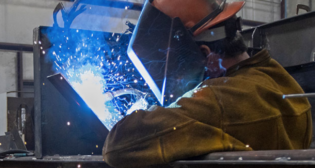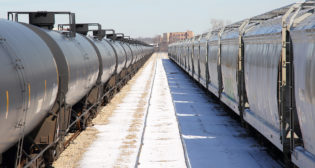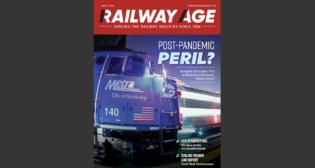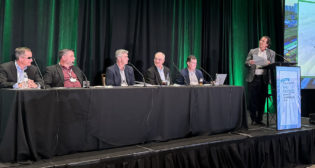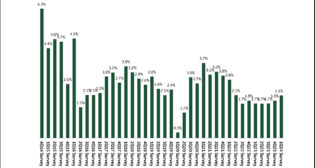
Railcar inquiries remain elevated: Cowen and Co.
Written by William C. Vantuono, Editor-in-Chief
Reporting on Cowen and Co.’s just-concluded 10th Annual Global Transportation Conference, analyst Matt Elkott said that railcar demand recovery is “likely sustainable but not at the same level as second-quarter 2017.” Cowen is projecting third-quarter 2017 orders for 9,400 units, below the second quarter’s 12,000 but significantly higher than the first quarter’s 4,800 and similarly low prior levels.
There is a general consensus that inquiries for new railcars with OEMs have remained elevated in the third quarter and in some cases increased from the second quarter, but so far have not translated into increased orders. “That said, if third-quarter orders come in anywhere close to second-quarter levels, we would view that favorably,” Elkott noted. “Second-quarter orders were nearly 18,000 units, up from 4,800 units in first-quarter 2017 and similarly anemic levels in prior quarters. Even excluding the 6,000 MUL (Mitsubishi UFJ Lease & Finance) orders [with Greenbrier], second-quarter 2017 orders represented a significant 150% sequential jump. While this may have been partly attributable to the inherent lumpiness of the industry, the persistence of strong inquiry activity reinforces our view that demand for new railcars is in recovery mode, even though second-quarter 2017 may not be a good indicator of the pace of such recovery.”
Cowen is projecting orders for 9,400 railcars in the third quarter, with an increase in deliveries to 12,800, following nearly 11,000 in the second quarter. This places Cowen’s backlog forecast at 63,100 units at the end of September, “which would represent a resumption of the backlog decline following a 10% increase in the second quarter,” Elkott said. “We continue to project an industry backlog trough in second-quarter 2018. Overall, sentiment at the conference among railcar industry experts was one of cautious optimism, compared to a somewhat more subdued sentiment previously.”
Increased orders and strong production levels in 2017’s second half bode well for OEMs, “but could place further pressure on industry fleet utilization,” Elkott noted. “This could be detrimental to the prospects of a broad-based lease rate recovery in the near term. Additionally, industry experts at our conference did not rule out more involvement by financial institutions seeking yield. If such institutions opt for growing their railcar assets via new equipment orders, utilization headwinds could intensify. Discussions at our conference suggest that lease rates continue to trend largely flat. We continue to believe that a broad-based lease rate recovery is unlikely before late 2017 or into early 2018.
All this bodes well Greenbrier, Trinity and ARI, which Cowen rates as “Outperform.” Margin compression concerns for Greenbrier are valid, yet “may be somewhat overblown,” Elkott said. “We are projecting a partial margin recovery for Greenbrier starting in [the company’s] Fiscal Year 2018, after our projected 620 basis points contraction this quarter, [Greenbrier’s fiscal fourth-quarter 2017]. We do not know the exact profile of fourth-quarter 2017 deliveries, but it is not necessarily representative of the profile of deliveries in future quarters. As such, we do not expect [Greenbrier’s] fiscal fourth-quarter 2017 margin to be the new reality. That said, we are modeling for [Greenbrier’s] Fiscal Year 2018 manufacturing gross margin to be 130 basis points below [its] Fiscal Year 2017.”
